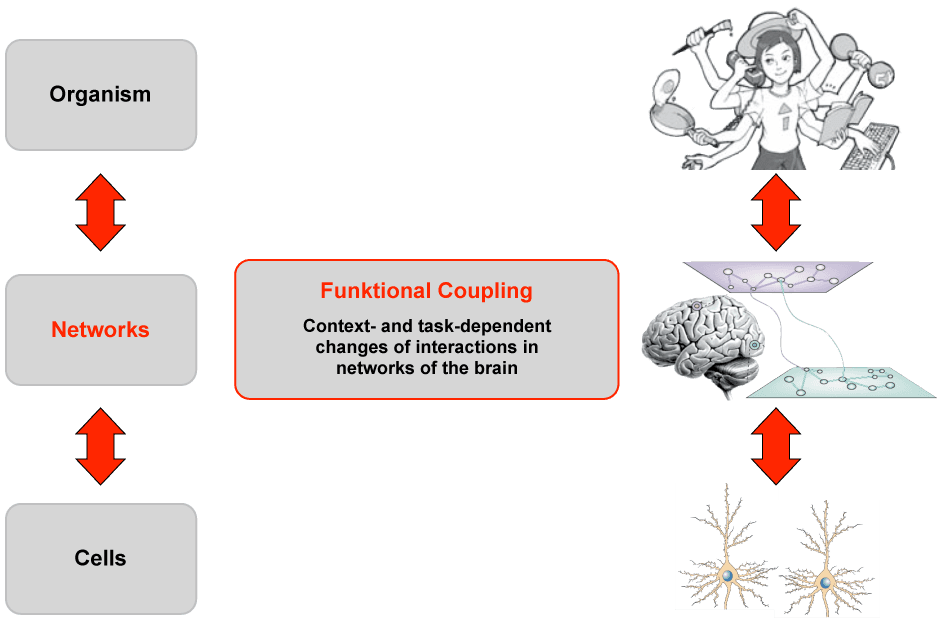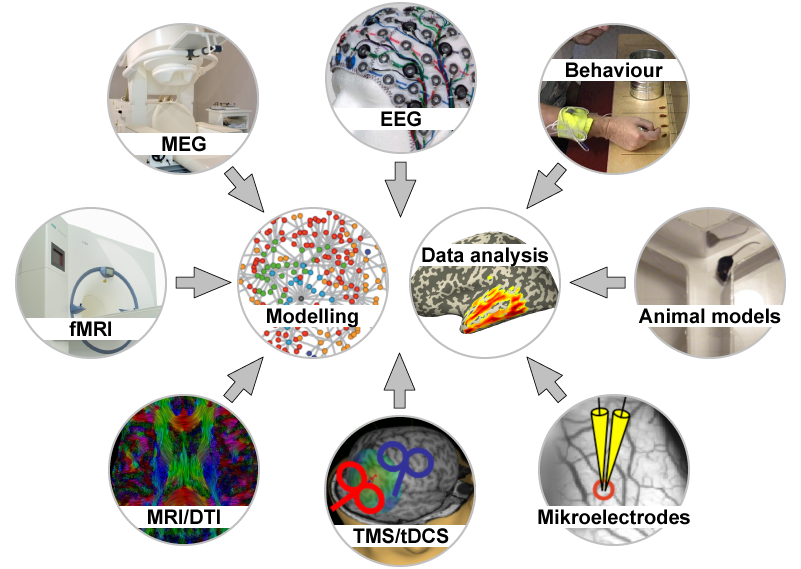RESEARCH OVERVIEW
RESEARCH OVERVIEW
Cognitive processes, such as perception, memory, attentional control, emotion, reward processing, action planning and execution, or conscious awareness, are based on the activation of highly distributed networks in the brain involving numerous interacting modules and brain regions. Neurological and psychiatric disorders causing disturbances in any of these cognitive domains, accordingly, also involve malfunctions in distributed networks. While enormous progress has been made in molecular neuroscience and neurogenetics, the different spatiotemporal scales of connectivity, molecular causes, and behaviour or pathology at the systems level have rarely been linked. Current concepts of brain function are still largely based on the notion of local processing and specialization of brain areas.

The overarching hypothesis pursued by the Collaborative Research Centre 936 is that the crucial determinant of behavior is neuronal network interaction and not local processing. We propose that perceptions and actions emerge from multi-site communication, defined as temporally coordinated local brain activities at multiple sites. Timing is critical when information is propagated through nodes and links of neuronal networks. Thus, investigation of temporal correlations of multi-site activity at multiple spatiotemporal scales is a central methodological principle of this Collaborative Research Centre.
The Collaborative Research Centre applies a multi-level approach combining different methods such as psychophysics, electroencephalography, magnetoencephalography, functional magnetic resonance imaging, diffusion tensor imaging, multi-site transcranial magnetic stimulation, multi-site microelectrode recordings, morphological-structural analyses and computational modelling.

The Collaborative Research Centre involves a consortium of 21 scientists from theoretical and clinical departments at the UKE and the University of Hamburg, as well as 4 scientists from the Universities of Lübeck, Giessen, and Berlin. All participating scientists contribute with proven expertise to the core theme of the Centre.
The two key goals of this consortium are, first, to bring basic neuroscience data into the clinical field and vice versa, especially by linking molecular and animal data with the human system; second, to link different spatial and temporal scales, at which neuronal multi-site communication is experimentally studied, ranging from small-scale cellular networks to large-scale interactions between different brain areas.
The research program bears high innovation potential in several respects: The network approach pursued here is able to contribute to new generalized models for cognitive processes; several projects of this Centre have the potential to add complementary evidence to new pathophysiological models based on altered network properties in brain disorders; as a translational future perspective, the research program of the Centre could help preparing grounds for innovative therapeutic approaches based on targeted manipulation of functional connectivity between different neuronal systems.
Funded by Deutsche Forschungsgemeinschaft
1. funding period: July 1, 2011 - June 30, 2015
2. funding period: July 1, 2015 - June 30, 2019
3. funding period: July 1, 2019 - June 30, 2023

